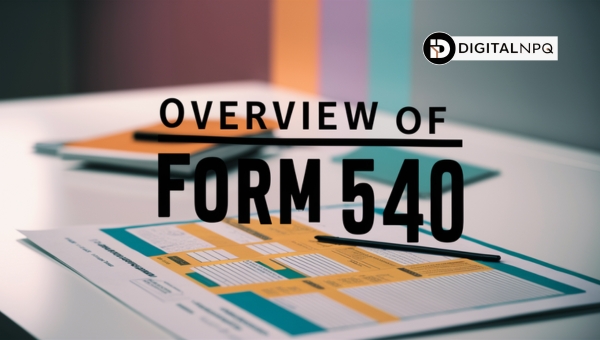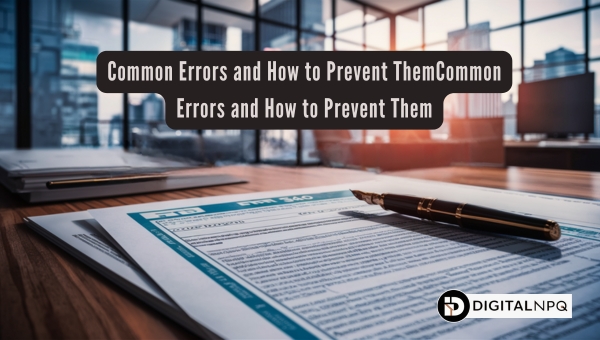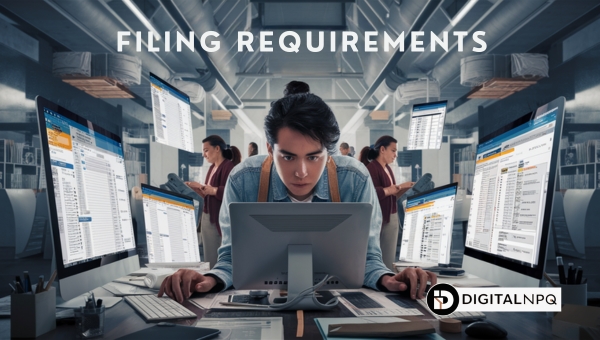FTB Form 540: Essential Guide to Filing California Taxes

The world of taxes can be perplexing, but understanding FTB Form 540 is crucial for California residents. This article delves into who needs to file, compares it with federal forms, outlines important dates, and highlights common errors.
We’ll also explore filing requirements, detailed instructions for completing the form, and recent changes for 2023. Whether you’re a first-time filer or looking to avoid mistakes, this guide covers everything you need to know about FTB Form 540.
Overview of FTB Form 540
Navigating the landscape of taxes can be challenging, but understanding FTB Form 540 is crucial for California residents. This form is essential for reporting income to the state and ensuring compliance with tax laws. Let’s delve into who needs to file, how it differs from federal forms, and the important dates to remember.

Who Needs to File?
Determining who needs to file FTB Form 540 depends on several factors:
- Residents of California must file if they meet certain income thresholds.
- Individuals with a total gross income of $17,844 or more.
- Those with adjusted gross income (AGI) of $4,537 or more if single or married/RDP filing separately.
- Couples with AGI of $9,074 or more if married/RDP filing jointly, head of household, or qualifying widow(er).
- Individuals with $1 or more in income who are required to file a federal tax return.
Form 540 vs. Federal Forms
FTB Form 540 is specifically for California state income taxes, while federal taxes are reported using Form 1040. Key differences include:
- Filing Status: California has specific statuses that may differ from federal ones.
- Tax Rates: The tax rates vary between state and federal levels.
- Deductions and Credits: Available deductions and credits can differ significantly between the two forms.
Important Dates
Staying aware of critical dates is essential for timely filing:
- Filing Deadline: April 15 (or the next business day if it falls on a weekend/holiday).
- Extension Deadline: October 15.
- Estimated Tax Payment Due Dates:
- April 18
- June 15
- September 15
- January 16 of the following year
Common Errors and How to Prevent Them
Filing taxes can be a challenging process, and mistakes on FTB Form 540 are quite common. Understanding these errors and how to avoid them can save you time and potential penalties. Let’s dive into some of the most frequent issues and how to steer clear of them.

Claiming Estimated Tax Payments
One common mistake is inaccurately claiming estimated tax payments. This often happens when taxpayers forget to record all their payments or miscalculate the amounts.
- Double-check your records: Ensure that your records match the amounts reported on FTB Form 540.
- Use online tools: Many tax software programs can help you accurately track and report these payments.
Claiming State Disability Insurance
Errors can also occur when claiming state disability insurance (SDI). These mistakes usually stem from misreporting the amounts withheld.
- Verify with W-2 forms: Ensure all SDI amounts are accurately reflected on your W-2 forms.
- Cross-check: Compare the SDI withholdings on your W-2 with your pay stubs to avoid any discrepancies.
Handling Deductions and Withholdings
Mistakes in deductions and withholdings can lead to incorrect tax calculations. Here are some tips to avoid these pitfalls:
- Review standard vs. itemized deductions: Assess which option benefits you more.
- Check withholding amounts: Ensure that your reported withholdings match your pay stubs and W-2 forms.
- Understand eligible deductions: Familiarize yourself with the deductions you qualify for to avoid errors.
Recommended E-filing Practices
E-filing can simplify the tax process, but it comes with its own set of best practices to ensure accuracy and efficiency.
- Use secure tax software: Opt for reputable and secure software to file your taxes.
- Gather all documents beforehand: Make sure you have all necessary documents, such as W-2s and 1099s, before you begin.
- Double-check entries: Review all your entries for accuracy before submitting your e-filed return.
Avoiding these common errors can help you navigate FTB Form 540 more smoothly and minimize the chances of complications.
Filing Requirements
Understanding the requirements for filing FTB Form 540 can help ensure you meet your California state tax obligations. Let’s look at the essential steps to determine if you need to file and discuss some special situations that may affect your filing requirements.

Steps to Determine Filing Requirement
To determine if you need to file FTB Form 540, follow these steps:
- Identify Your Filing Status: Determine if you are single, married, head of household, or a qualifying widow(er).
- Calculate Your Total Gross Income: Add up all income from various sources, including wages, interest, and dividends.
- Assess Your Adjusted Gross Income (AGI): Subtract any adjustments to income from your total gross income to find your AGI.
- Compare Income to Filing Thresholds: Check if your income exceeds California’s filing thresholds for your status.
Special Situations
Certain circumstances may alter your need to file:
- Part-Year Residents or Nonresidents: If you lived in California for only part of the year or earned income in California as a nonresident, you might need to file Form 540NR instead.
- Military Members: Active duty military members stationed in California may have different filing requirements or exemptions.
- Dependents with Income: Dependents with income over a certain threshold may also need to file their own return.
By understanding these steps and special situations, you can better navigate your tax filing process and avoid any surprises.
Instructions for Completing Form 540
Ready to tackle FTB Form 540? Let’s break it down step by step, so you can complete it with ease. We’ll cover everything from preparation to filling out each section, ensuring you understand the crucial parts of the form.
Before You Begin
Before diving into the form, it’s important to get organized. Here are preparatory steps to make the process smoother:
- Complete your federal tax return first: This will provide a lot of the information you’ll need for your state return.
- Gather necessary documents: Collect all your W-2s, 1099s, and any other documents showing income.
- Have your social security number handy: You will need this to fill out various sections of the form.
Filling in Your Tax Return
Filling out FTB Form 540 involves several steps. Here’s a guide to help you through:
- Use black or blue ink: Print clearly to ensure your form is readable and can be processed without delays.
- Enter your social security number: This should be placed at the top of each page.
- Complete the personal information section: Include your name, address, and filing status.
- Report your total income: This includes wages, interest, dividends, and other sources of income.
- Claim deductions and credits: Choose between the standard deduction or itemized deductions, and claim any eligible credits.
- Calculate your tax: Use the provided tax tables to determine your tax liability.
- Review for accuracy: Double-check all information to avoid errors.
Key Sections of the Form
Understanding the crucial sections of FTB Form 540 can make the process more manageable. Here’s what to focus on:
- Filing Status: Select your California filing status, which may differ from your federal status.
- Income: Accurately report all sources of income, ensuring no income is overlooked.
- Deductions: Decide whether to take the standard deduction or itemize. This choice can significantly impact your tax liability.
- Credits: Claim applicable credits, such as the Child and Dependent Care Credit or the Earned Income Tax Credit, to reduce your tax liability.
By following these steps and understanding the key sections, you’ll be well-equipped to complete FTB Form 540 accurately and efficiently.
Signing and Filing Your Tax Return
Filing your tax return may seem overwhelming, but with the right guidance, it becomes straightforward. Once you’ve completed your FTB Form 540, the final steps involve signing and submitting it. This section will guide you through the essential steps to ensure your tax return is properly filed.
Mailing Your Tax Return
When it comes to mailing your completed FTB Form 540, following the correct steps is crucial:
- Double-Check Everything: Before sealing the envelope, review your form for any errors. Ensure that all information is accurate and complete.
- Sign Your Return: Both you and your spouse, if filing jointly, must sign the form. An unsigned form can lead to delays.
- Attach Necessary Documents: Include all required attachments, such as W-2 forms and any additional schedules or supporting documents.
- Choose the Correct Address: The address to mail your form depends on whether you owe taxes or are expecting a refund. Check the latest instructions for the appropriate mailing address.
- Use a Secure Envelope: Place your documents in a sturdy, secure envelope to prevent any damage during transit.
- Consider Certified Mail: For added security, use certified mail or a similar service that offers tracking and confirmation of delivery.
By following these steps, you can ensure that your FTB Form 540 is mailed correctly and reaches the tax authorities without issues. Properly mailing your tax return helps avoid delays and potential penalties.
Important Changes for 2023
The year 2023 brings several updates that affect the filing of FTB Form 540. It’s crucial to stay informed about the new tax law changes, differences between state and federal laws, and updated reporting requirements.
2023 Tax Law Changes
In 2023, there are a few key changes to the tax laws that impact FTB Form 540.
- Standard Deduction Adjustments: The standard deduction amounts have been adjusted for inflation.
- Tax Credit Updates: Certain tax credits, such as the Earned Income Tax Credit, have seen modifications.
- Income Brackets: There have been shifts in the income brackets, which could affect your tax rate.
It’s important to review these changes to ensure accurate filing.
Differences between California and Federal Law
California’s tax laws often differ from federal regulations. Here are some major differences:
- Tax Brackets and Rates: California has its own tax brackets that differ from federal rates.
- Deductions and Credits: Some deductions and credits available at the federal level are not applicable for California returns.
- Income Types: The treatment of certain types of income, such as capital gains, may differ between state and federal tax codes.
These differences can significantly impact your tax calculations and liabilities.
Reporting Requirements
For 2023, there are new reporting requirements you need to be aware of:
- Federal Return Changes: Any changes to your federal return must be reported on your California return.
- Specific Income Types: New reporting requirements may apply to specific income types or transactions.
- Documentation: Ensure you have all necessary documentation to support your reported income and deductions.
Understanding these requirements can help you avoid errors and ensure compliance.
FAQs
Can I file CA 540 online?
Yes, you can file CA 540 online using the California Franchise Tax Board’s website or authorized e-filing services. E-filing is secure, fast, and ensures quicker processing.
Where to file 540 California?
You can mail your completed CA 540 form to the California Franchise Tax Board. The specific address depends on whether you owe taxes or are expecting a refund. Check the instructions on the form for the correct mailing address.
How much mortgage interest is deductible in California?
In California, the mortgage interest deduction follows federal guidelines. Generally, you can deduct interest on mortgage debt up to $750,000 if the mortgage was taken out after December 15, 2017. For mortgages before this date, the limit is $1 million.
Conclusion
Filing FTB Form 540 can seem overwhelming, but understanding the requirements and common pitfalls can make the process smoother. From knowing who needs to file to grasping the differences between state and federal forms, every detail matters.
Avoid common errors by double-checking deductions and estimated tax payments, and consider e-filing for added convenience. Stay informed about changes in tax laws to ensure accurate filing. Thank you for reading! For more insightful articles on tax filing and financial tips, be sure to explore the other blogs on our site.
